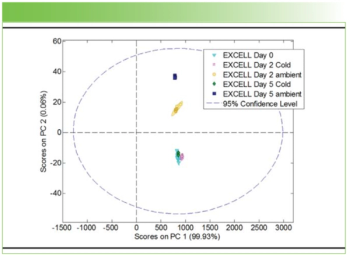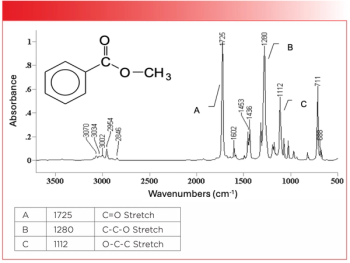
- April/May 2024
- Volume 39
- Issue 04
- Pages: 26–29
William F. Meggers: The Dean of American Spectroscopists
William Frederick Meggers, honored as the Dean of American Spectroscopists by the US National Bureau of Standards (NBS), dedicated over five decades of his career to NBS, which later became the US National Institute of Standards and Technology (NIST) in 1988 under the United States Department of Commerce. We profile his contributions to spectroscopy here.
William Frederick Meggers, honored as the Dean of American Spectroscopists by the US National Bureau of Standards (NBS), dedicated over five decades of his career to NBS, which later became the US National Institute of Standards and Technology (NIST) in 1988 under the United States Department of Commerce. Throughout his extensive tenure, spanning over half a century, Meggers made significant contributions to the fields of spectroscopy, atomic physics, and photographic techniques. Retiring officially at the age of 70 in 1958 as Chief of the Spectroscopy Section of the NBS organization, his impact endured. He was notably recognized as the first recipient of the Society for Applied Spectroscopy Gold Medal and remains immortalized through the Meggers Award, an annual accolade bestowed for the most outstanding paper published in the journal Applied Spectroscopy.
William Frederick Meggers, born on July 13, 1888, in Clintonville, Wisconsin, a small town with a population of approximately 1450 at the time, spent his formative years immersed in academic pursuits amidst the rural backdrop. Raised on a farm near Clintonville, young Bill balanced his chores with schoolwork and various activities, demonstrating both diligence and academic promise. Graduating as valedictorian from Clintonville High School in 1906, Meggers harbored aspirations for a robust college education. He pursued this dream at Ripon College, where he earned an academic scholarship and further supplemented his income by organizing a dance band, showcasing his musical talents on the slide trombone, violin, and trumpet—a youthful period he fondly reminisced about later in life (3–5).
At Ripon College, Meggers distinguished himself in the field of physics under the tutelage of Professor William H. Barber, a figure well-regarded for his pedagogical expertise. Achieving his Bachelor of Arts in physics in 1910, Meggers proceeded to a role as a graduate assistant within the Physics Department, a period during which he refined his technical competencies and established the groundwork for his later significant contributions to spectroscopy and atomic physics. Professor Barber’s influence extended beyond conventional teaching; he was instrumental in guiding Meggers and many others toward advanced studies in physics, thereby reinforcing his impact on the scientific community documented in Ripon College’s historical records (6,7). The mentorship between Barber and Meggers, characterized by a profound academic collaboration, was crucial in motivating and directing Meggers’ path to becoming a leading authority in the spectroscopy and atomic physics domains.
With this excellent foundational beginning in physics, Meggers joined the University of Wisconsin, Madison, only 77 miles from Ripon College, and served as a laboratory assistant and graduate student during the academic year 1911–1912 under the supervision of several prominent academicians of his time: Charles Max Mason, a mathematical physicist who became the President of the University of Chicago in 1925; Charles Elwood Mendenhall, an extremely diverse and active physicist; and Leonard Rose Ingersoll, who is memorialized at the University of Wisconsin by the L. R. Ingersoll Physics Museum formed in his honor. In 1914, Meggers’ interest in spectroscopy was secured and accelerated while reading Niels Bohr’s influential series of papers on the “Constitution of Atoms and Molecules” (8).
Joining NBS and Completing His Formal Education
In September 1912, at the age of 24, Meggers embarked on a new phase of his career by joining the Carnegie Institute of Technology in Pittsburgh as a physics instructor. Despite this role, Meggers was deeply captivated by the pioneering work of Niels Bohr in spectroscopy. This fascination spurred him to pivot his career towards spectroscopy research exclusively. Convinced that the US National Bureau of Standards (NBS) would provide an unparalleled environment for dedicated research in this field, backed by substantial government funding, Meggers determinedly pursued an opportunity there. His commitment led him to successfully pass a rigorous two-day Civil Service examination held at the Pittsburgh Post Office, culminating in his appointment as a laboratory assistant at the NBS on June 12, 1914 (4).
Meggers worked diligently in measuring accurate wavelengths for standard materials using interferometers, as well as in developing photographic techniques to detect beyond the visible red spectral region, and also measured accurate refractive indexes of the atmosphere, which are essential for many optical calculations involving spectroscopy, physics and optics. This work was completed and published while he finished his PhD in physics from The Johns Hopkins University in 1917 (9). In all, he worked for over five decades at NBS, with many significant contributions to the fields of spectroscopy, photography, and atomic physics. Despite officially retiring at age 70 in 1958 as Chief of the Spectroscopy Section at NBS, he continued his research work until just before his death in 1966.
Five Decades at NBS
Throughout his career, Meggers made numerous significant contributions across various aspects of spectroscopy. His lifework can be summarized under four main headings (4,5,13–22):
- Precision Measurement of Standard Wavelengths: Meggers set world records for contributions to the precision measurement of standard wavelengths for over five decades. He initiated a program of interferometric measurement of absorption lines in the solar spectrum in 1925, laying the foundation for modern spectroscopic standards in astrophysics. His iron emission lines from 2100 to 10,216 angstroms (210 to 1021.6 nm) became unique standards under the supervision of the International Astronomical Union, to which Meggers was a chief contributor.
- Detailed Descriptions of Photographed Spectra: Meggers pioneered the use of photosensitizing dyes to record spectra in the long-wave visible and the near-infrared regions. He extended records of laboratory arc spectra and the sun’s spectrum, utilizing dicyanin-stained photographic plates and later infrared-sensitized emulsions, thereby significantly advancing spectral observations. By 1934, using new infrared-sensitized emulsions prepared by the Eastman Kodak Company, he succeeded in observing laboratory spectra beyond 13,000 Å (1300 nm).
- Quantum Interpretation of Spectra: Meggers unraveled the spectra of numerous heavy elements and ions over several decades, contributing to the quantum theory interpretation of complicated spectra. He discovered multiplets in 1922 and proposed the vector model of the atom in 1924-1925 to explain multiplet structure and the anomalous Zeeman effect. Over his career, he disentangled the spectra of some eighty heavy elements and ions, determining their various quantized energy states and the binding forces on their electrons.
- Practical Applications of Spectroscopy: Meggers demonstrated the practical utility of spectrochemical analysis, advocating for its adoption in laboratories as early as 1914. He provided crucial spectral-line intensity data for over 70 metallic elements, essential for both qualitative and quantitative analysis. In 1961, after twenty-eight years of intermittent investigation, Meggers published Tables of Spectral-Line Intensities containing relative energies of 39,000 spectral lines in the range 900 to 9000 Å (90 to 900 nm) characteristic of 70 metallic elements observed under standardized conditions. Nearly every scientist is familiar with the Welch charts of the periodic table of the elements that hang on the walls of most college and high school laboratories. These were first pictorially developed by Henry D. Hubbard and after his death were continually revised and extended by Meggers together with a descriptive booklet or explanatory key summarizing the physical properties of the elements.
Scientific Accolades
Meggers’ impact transcended his achievements in spectroscopy; he also held crucial positions in various scientific organizations. Leading as the president of the Optical Society of America (OSA) from 1949 to 1951, he guided the society through significant changes. Moreover, Meggers served as the OSA’s representative on the governing board of the American Institute of Physics (AIP) from 1952 to 1958, influencing the broader scientific community’s governance and trajectory.
Recognizing his invaluable contributions, Meggers was bestowed with honorary membership in the Optical Society of America, a testament to his enduring impact on the field. His exceptional achievements were acknowledged through multiple key awards, including the Frederick Ives Medal in 1947 and the C. E. K. Mees Medal in 1964. He received the Department of Commerce Gold Medal in 1949, the inaugural Gold Medal of the Society for Applied Spectroscopy (SAS) in 1952, the Cresson Medal of the Franklin Institute in 1953, and the Pittsburgh Spectroscopy Award in 1963, highlighting his many contributions to the broader scientific and spectroscopic communities (4,5).
Meggers’ eminent stature in the scientific community was further underscored by his election to the National Academy of Sciences in 1954, a recognition of his gravitas and scholarly prowess. Throughout his career, he assumed various leadership roles, including chairing the National Research Council (NRC) Committee on Line Spectra and presiding over the International Joint Committee for Spectroscopy. Moreover, he served as the president of the Wavelength Commission of the International Astronomical Union (IAU), demonstrating his global impact and leadership in shaping the direction of astronomical scientific research.
Notably, Meggers’ commitment to academic excellence extended beyond his research and leadership roles. He was a member of Phi Beta Kappa and Sigma Xi, actively participating in numerous technical societies and organizations, contributing to their advancement and fostering collaboration among scholars and researchers. Meggers’ comprehensive engagement in scientific leadership, research, and academic endeavors solidified his legacy as a leading influencer in the field of spectroscopy and a valued figure in the scientific community (4,5).
Film Archives
Meggers was an avid musician in his younger years (4,5) and also an enthusiastic “home” movie maker for over 32 years. Throughout his lifetime he filmed many movies, including thirty-nine reels of 16 mm film consisting of both black and white and color film currently housed at the AIP (10). Themes of his movies include family milestones, first steps, birthdays, graduations, family reunions, as well as coverage of his local and international travels, for pleasure, as well as for important professional meetings.
The movie archive list from William Meggers chronicles a series of significant scientific meetings and visits across Europe and the United States from 1927 to 1954, highlighting the vibrant international collaboration and exchange in the physics and astronomy communities during this period. Meggers documented interactions with notable scientific figures such as Pieter Zeeman, Heinrich Kayser, James Franck, and Arthur Eddington in locations ranging from Amsterdam to Berlin, and from Göttingen to Cambridge, Massachusetts. His movie archive encompasses pivotal moments such as meetings at the International Bureau of Weights and Measures, the International Astronomical Union gatherings, and an expedition to observe a solar eclipse in Sweden, illustrating the breadth of scientific inquiry and discovery he pursued, including advancements in physics, the calibration of international standards, and pioneering astronomical observations (10).
Legacy
William Frederick Meggers died November 19, 1966, after a brief illness, at the age of seventy-eight, leaving behind a legacy of innovative and significant research and a profound impact on the field of spectroscopy. At that time he was survived by his wife, Edith Marie Raddant, a daughter, Betty Jane Evans, a son, William Frederick Meggers, Jr., a physicist and electronic engineer; and three grandchildren. A second son, John Charles Meggers, an engineer, preceded him in death by only a few weeks. Meggers enduring contributions continue to inspire and shape the field of spectroscopy to this day. In 1970 the International Astronomical Union (IAU) designated a far side lunar crater after him (11). In sum total, William Frederick Meggers is indeed a Dean of American Spectroscopists (12).
References
(1) Headshot Attribution: U.S. Library of Congress:
(2) Portrait Attribution: Photograph by Harris and Ewing, courtesy of AIP Emilio Segrè Visual Archives, W. F. Meggers Collection:
(3) Clintonville Wisconsin Wikipedia Home Page.
(4) Foote, P. D. William Frederick Meggers 1888–1966 Biographical Memoir; National Academy of Sciences, Washington, D.C., 1970.
(5) Society for Applied Spectroscopy; Arcs & Sparks 1967, 12 (1), 1,3–4.
(6) The Oshkosh Northwestern Home Page.
(7) American Association of Physics Teachers (AAPT) Home Page.
(8) Bohr, N. “I. On the Constitution of Atoms and Molecules.” The London, Edinburgh, and Dublin Philosophical Magazine and Journal of Science 26.151 (1913): 1–25. DOI:
(9) Meggers, W. F. Wavelength Measurements in Spectra from 5600 TO 9600 Angstroms.” Ph. D. Thesis, The Johns Hopkins University, 1917.
(10) AIP Home Movies Archive Home Page.
(11) USGS Home Page. (MC) Meggers Moon Crater,
(12) NIST William F. Meggers Page. Image of Meggers working at NBS. Attribution is NIST Site
References and Further Reading
Books and Monographs
(13) Burns, K.; Meggers, W. F.; Merrill, P. W. Interference Measurements of Wave Lengths in the Iron Spectrum (3233A-6750A). No. 274. US Department of Commerce, Bureau of Standards, 1917.
(14) Meggers, W. F. Wave-length Measurements in Spectra from 5600 A to 9600 A. Johns Hopkins University, 1917.
Earliest Research Papers
(15) Meggers, W. F. Notes on Comparisons of Lengths of Light Waves by Interference Methods, and Some Wave Lengths in the Spectrum of Neon Gas. Bur Standards, Sci Paper 1915, 12 (198), 16.
(16) Meggers, W. F. Photography of the Solar Spectrum from 6800 Å to 9600 Å. Popular Astronomy 1917, 25, 660.
(17) Meggers, W. F. Wave-length Measurements in Spectra from 5600 A. to g600 A. Journal of the Franklin Institute 1917, 184 (4), 571–572.
(18) Google Scholar W. F. Meggers Home Page.
Other Reference Sources
(19) AIP Home Page. At Mt. Wilson, AIP:
(20) AIP Home Page. AIP Biography:
(21) AIP Home Page. AIP Biography Archive:
(22) Wikipedia William_Frederick_MeggersHome Page.
ABOUT THE AUTHOR
Articles in this issue
over 1 year ago
2024 Review of Spectroscopic Instrumentationover 1 year ago
Vol 39 No 4 Spectroscopy April/May 2024 PDFover 1 year ago
Coming to a Screen Near You?Newsletter
Get essential updates on the latest spectroscopy technologies, regulatory standards, and best practices—subscribe today to Spectroscopy.





